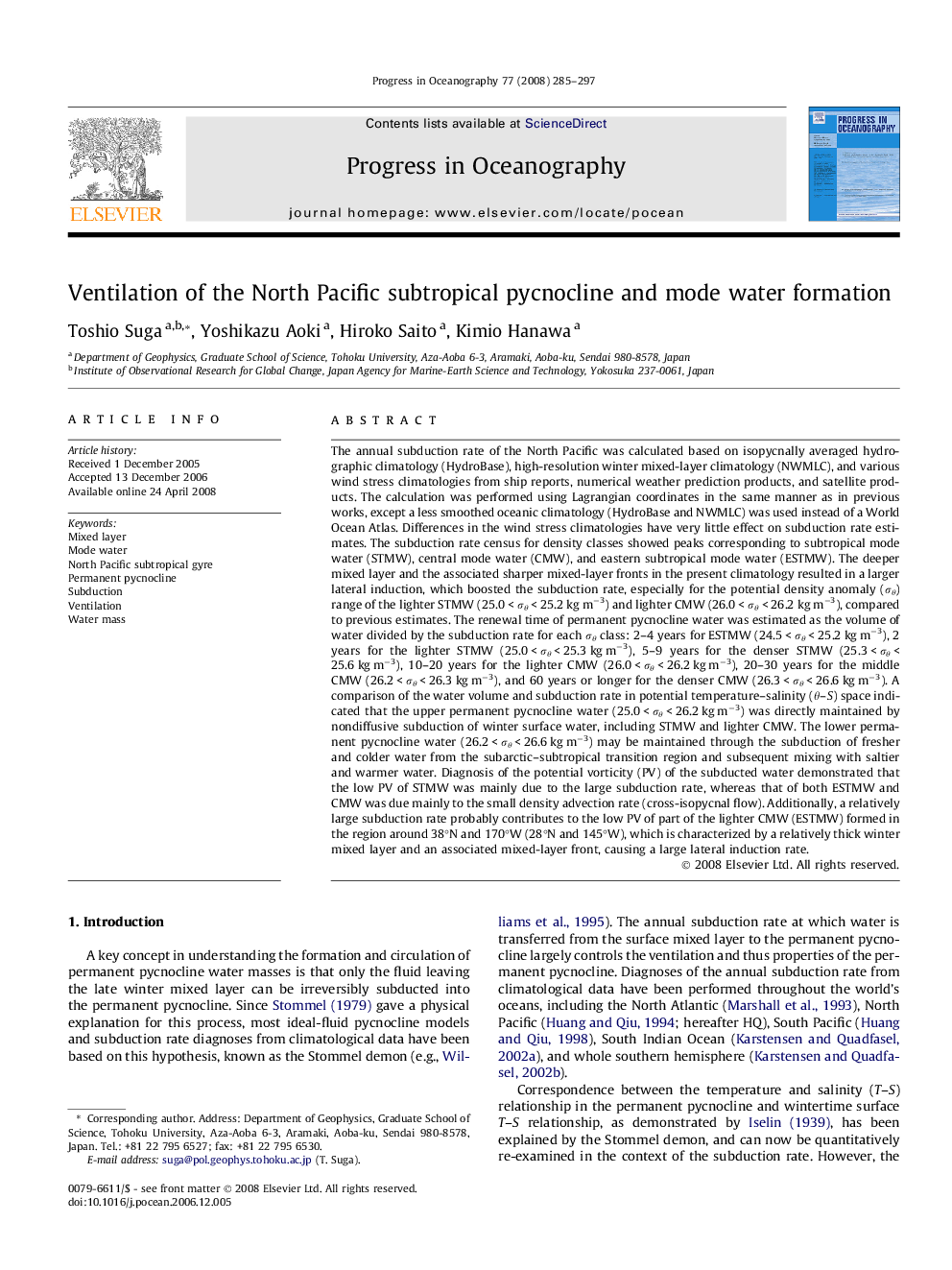| کد مقاله | کد نشریه | سال انتشار | مقاله انگلیسی | نسخه تمام متن |
|---|---|---|---|---|
| 4553709 | 1328922 | 2008 | 13 صفحه PDF | دانلود رایگان |

The annual subduction rate of the North Pacific was calculated based on isopycnally averaged hydrographic climatology (HydroBase), high-resolution winter mixed-layer climatology (NWMLC), and various wind stress climatologies from ship reports, numerical weather prediction products, and satellite products. The calculation was performed using Lagrangian coordinates in the same manner as in previous works, except a less smoothed oceanic climatology (HydroBase and NWMLC) was used instead of a World Ocean Atlas. Differences in the wind stress climatologies have very little effect on subduction rate estimates. The subduction rate census for density classes showed peaks corresponding to subtropical mode water (STMW), central mode water (CMW), and eastern subtropical mode water (ESTMW). The deeper mixed layer and the associated sharper mixed-layer fronts in the present climatology resulted in a larger lateral induction, which boosted the subduction rate, especially for the potential density anomaly (σθ) range of the lighter STMW (25.0 < σθ < 25.2 kg m−3) and lighter CMW (26.0 < σθ < 26.2 kg m−3), compared to previous estimates. The renewal time of permanent pycnocline water was estimated as the volume of water divided by the subduction rate for each σθ class: 2–4 years for ESTMW (24.5 < σθ < 25.2 kg m−3), 2 years for the lighter STMW (25.0 < σθ < 25.3 kg m−3), 5–9 years for the denser STMW (25.3 < σθ < 25.6 kg m−3), 10–20 years for the lighter CMW (26.0 < σθ < 26.2 kg m−3), 20–30 years for the middle CMW (26.2 < σθ < 26.3 kg m−3), and 60 years or longer for the denser CMW (26.3 < σθ < 26.6 kg m−3). A comparison of the water volume and subduction rate in potential temperature–salinity (θ–S) space indicated that the upper permanent pycnocline water (25.0 < σθ < 26.2 kg m−3) was directly maintained by nondiffusive subduction of winter surface water, including STMW and lighter CMW. The lower permanent pycnocline water (26.2 < σθ < 26.6 kg m−3) may be maintained through the subduction of fresher and colder water from the subarctic–subtropical transition region and subsequent mixing with saltier and warmer water. Diagnosis of the potential vorticity (PV) of the subducted water demonstrated that the low PV of STMW was mainly due to the large subduction rate, whereas that of both ESTMW and CMW was due mainly to the small density advection rate (cross-isopycnal flow). Additionally, a relatively large subduction rate probably contributes to the low PV of part of the lighter CMW (ESTMW) formed in the region around 38°N and 170°W (28°N and 145°W), which is characterized by a relatively thick winter mixed layer and an associated mixed-layer front, causing a large lateral induction rate.
Journal: Progress in Oceanography - Volume 77, Issue 4, June 2008, Pages 285–297